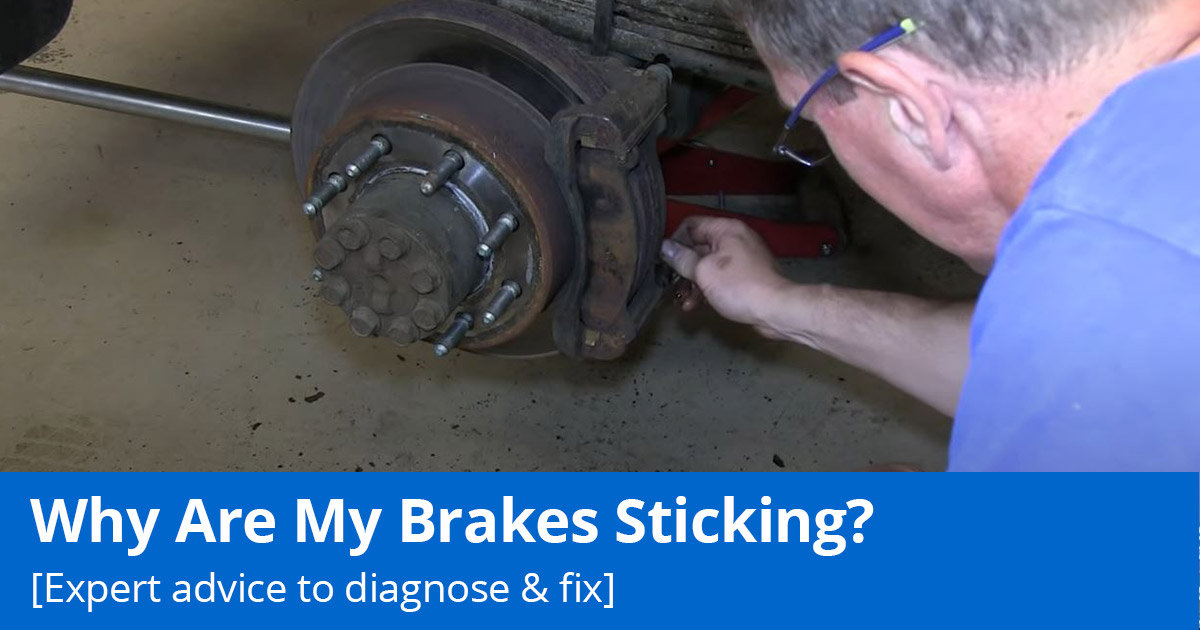
Diagnose and Fix Sticking Brakes on Your Car or Truck
Your brakes are one of the most important parts of your car that you wouldn’t want to overlook. This is especially true if they produce a strange grinding or squeaking sound when you step on the brake pedal. Such sounds are caused by some parts of your brakes sticking and rubbing against each other.
Brakes sticking or not working?
In this post, we’ll take a look at some of the symptoms that you should look out for, causes of brakes sticking, and solutions to the problem. This will help you drive safely and ensure you have brakes that are efficient and functional at all times.
How do you know if your brakes are sticking?
There are several symptoms that could indicate your brakes are sticking.
They include:
1. A sticking sensation as you drive.
2. Car pulling to one side of the road while the steering wheel is straight.
3. Car drives as if it’s low on power or the parking brake is on.
4. Excessive heat coming off from one or more wheels after a drive. This could be accompanied by smoke and the smell of burning.
What would cause brakes to not release?
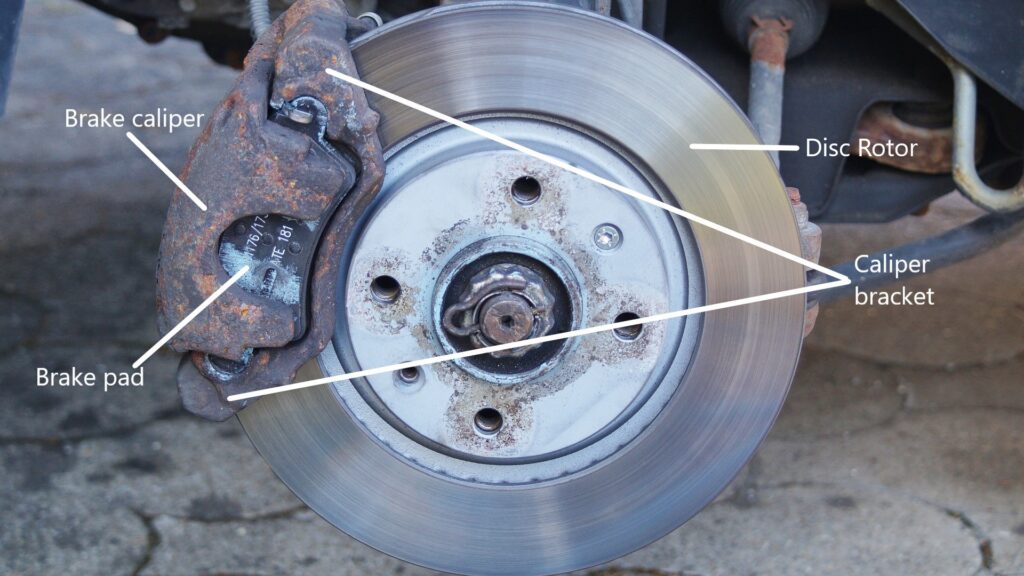
Most cars use disc brakes as their primary system for braking. Here, a typical braking system will include brake pads, a caliper, and rotor. Out of all these parts, you’ll want to pay attention to the brake caliper and caliper bracket. These are the parts that mostly cause the brakes to become sticky.
There are three places that you should check on the brake caliper.
1. Sliding bolts that are worn and dirty
Sliding bolts hold the caliper to the caliper bracket. They also allow the caliper to slide back and forth. They are the first place to look if you have brakes sticking on your car.
If they have any wear on them, you can clean them using a cloth or a 1,200 – 2,000 grit fine sandpaper. Remember to apply some bearing grease or brake grease when putting the bolts back in. If they are too worn out, you’ll need to replace them.
2. Caliper pistons that are worn
Caliper pistons are found within the caliper. Once you step on the brake pedal, the brake fluid flows to the caliper. The fluid pushes the caliper pistons which then apply pressure on the brake pads. The brake pads get into contact with the rotor and stop the car by creating friction.
Caliper pistons have a rubber seal that surrounds them. When this rubber is torn, it can be left exposed to debris and dirt. This causes the pistons to freeze. They are left unable to release when you lift your foot off the brake pedal.
3. Rusted and pitted slides under the caliper bracket
Another problem could be a caliper bracket that is rusted and pitted. This causes the stainless steel slides that hold the brake pads to expand – preventing the brake pads from gliding easily. The brake pads stay frozen for a long time and can cause the caliper pistons to seize up.
How do you fix a sticking brake caliper?
If you have brakes sticking to your car, the steps below will show you how to remove and replace a brake caliper and caliper bracket that is worn out, rusted, or pitted.
This guide is based on our 2002 GMC Sierra 2500HD that had smoke and smell coming from the right rear brake. You can check out the video here. The steps may vary slightly depending on the type of car you own.

Below are some of the tools you’ll need to fix brakes that are sticking:
- Jack
- Lug wrench
- Wheel wedges
- Flat blade screwdriver
- 18mm socket
- Hammer
- Pry bar
- A piece of pipe (provides leverage)
- ½ inch air impact wrench
- T55 Torx socket
- ½ inch breaker bar
- Ratchet
- Bearing grease or white grease
- Rust penetrant
- Sandpaper
Steps to replace a sticking brake caliper
Step 1: Chock the front wheels using wheel wedges if you’re working on one of the rear wheels. The vice versa applies if you’re working on the opposite side. This prevents the vehicle from making unnecessary movements.
Step 2: Raise your vehicle as you would when changing a tire. Ensure that the jack is in contact with the metal beam that forms part of the vehicle’s chassis.
Step 3: Take out your lug wrench and remove the wheel and tire to expose the brake assembly.
Step 4: Find and remove the bottom bolt that holds the caliper to the caliper bracket. In the example above, the vehicle had a T-55 Torx bolt. We used a T-55 Torx bit flex handle to remove it.
If you find it too hard to turn the bolt, use a hammer to hit the area surrounding the bolt. This helps to loosen it a bit and makes it easier to remove. You can also use a piece of pipe for leverage when unscrewing the bolt.
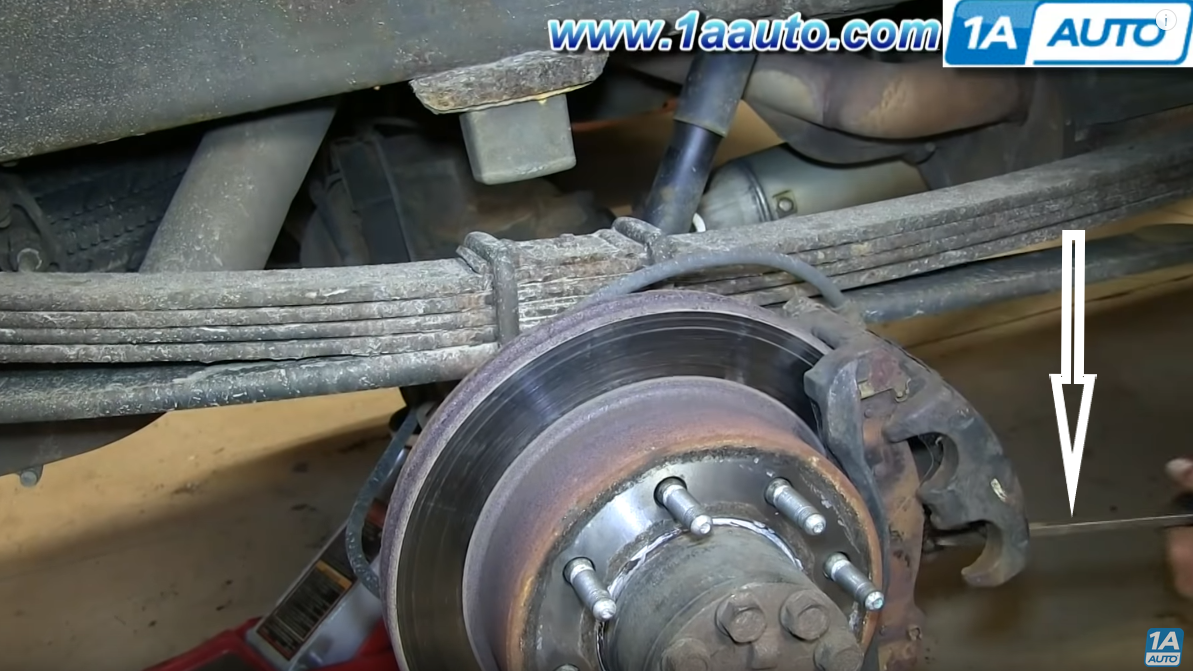
Step 5: Wedge your flat screwdriver between the caliper bracket and the caliper itself. This helps to release the caliper from the bracket.
Step 6: Once you’ve released the caliper, rotate it upwards and pull it out towards the right as shown above. It will come out together with the top slide bolt.
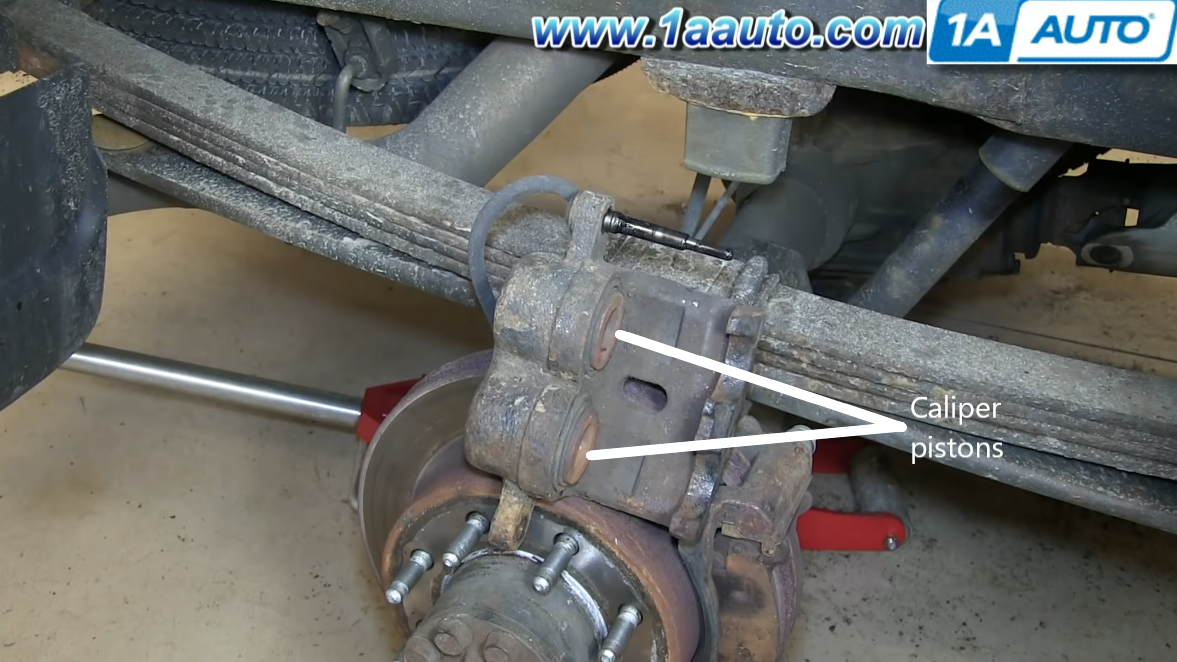
Step 7: Check to see if your caliper pistons are stuck. You can do this by very gently pressing the brake pedal and have someone watch the movement of the pistons. If one or both of them isn’t moving, it could be the reason behind sticking brakes.
Step 8: Remove the slide bolt that came out with the caliper. If it’s stuck, you can have someone hammer the surrounding area while you try to remove it using the impact wrench.
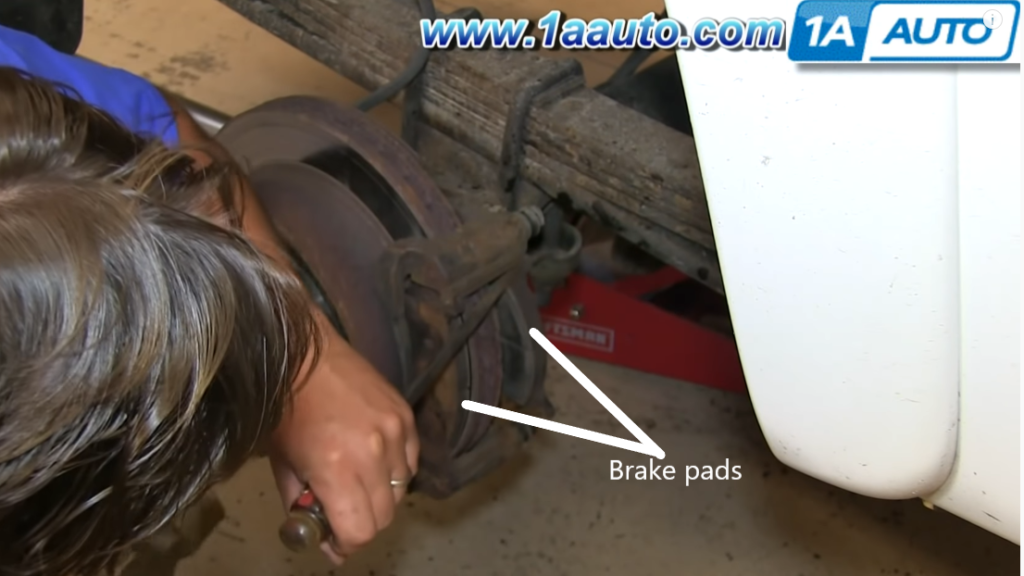
Step 9: Use a large screwdriver or a pry bar to remove the brake pads. You may have to use force to pry them off. This is a common symptom when you have your brakes sticking. If your brake pads are not in good condition, you can buy new ones at 1aauto.com.
Step 10: Unscrew the banjo bolt that connects the brake hose to the caliper. Have a collection pan placed on the ground to collect any leaking brake fluid. Avoid getting any brake fluid on your hands or eyes.
Step 11: Set your caliper aside. If it has pistons that are frozen or stuck, you’ll need to replace it with a new one.
Step 12: Spray some penetrating oil into the caliper bracket and into where you insert the bolts.

Step 13: Clean the caliper bolts with a cloth and slide them in and out of where they secure the caliper. Repeat the process a couple of times. This helps to clean the caliper brackets of any dirt and debris.
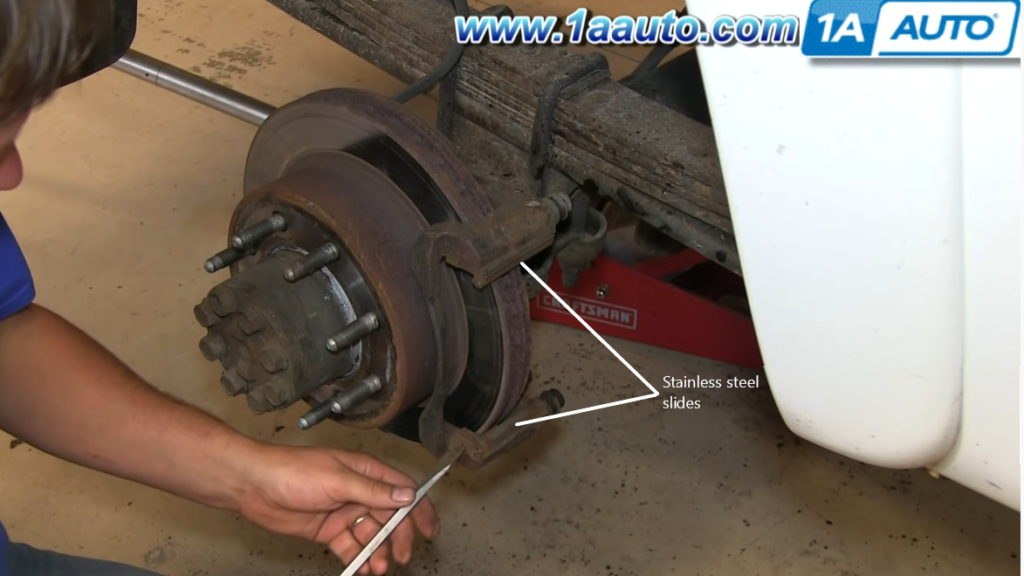
Step 14: Use a large screwdriver or pry bar to remove the stainless steel slides that hold the brake pads. Check underneath the slides. If you notice that they are rusted and pitted, you’ll need to replace the caliper bracket
Step 15: Use a socket breaker bar to remove the top and bottom bolts that secure the caliper bracket to the axle. In this example, we used an 18-millimeter socket & breaker bar. If you find it too hard to unscrew the bolts, use a piece of pipe to provide some leverage.
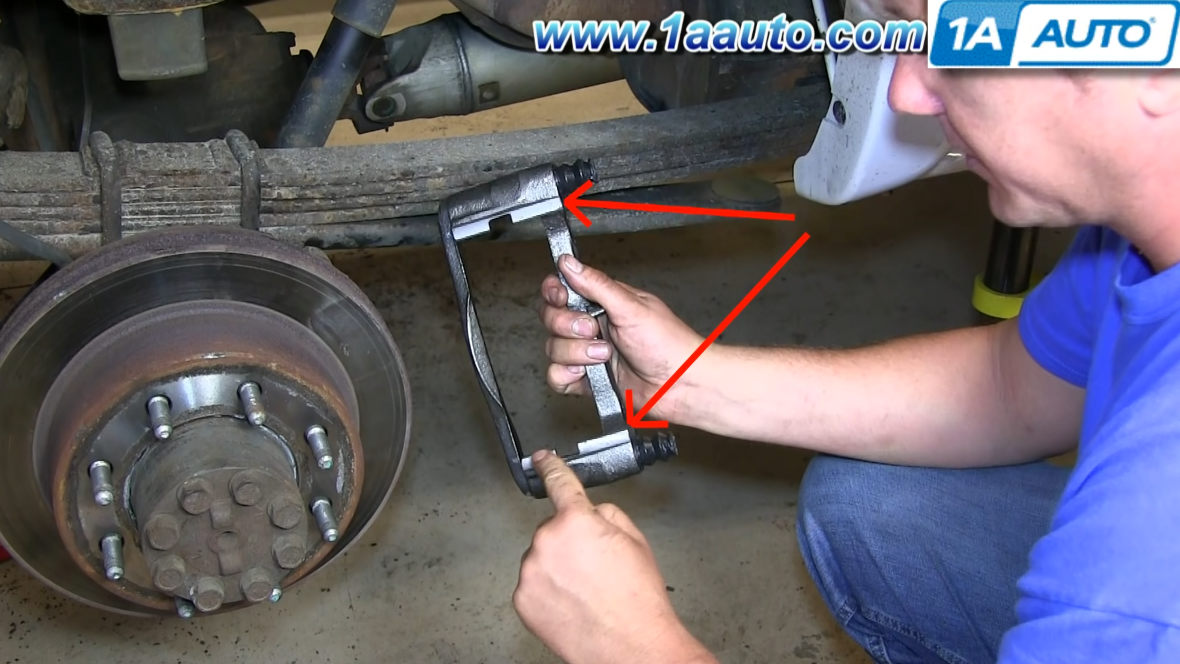
Step 16: Replace the old caliper bracket with a new one and reassemble parts of the caliper. Remember to replace old parts that are no longer efficient with new ones.
Brakes sticking conclusion
Checking for problems on your brake system can be a challenging task if you’re not an expert. If your brakes are sticking on your car, we hope that this step-by-step guide helps you fix it. We stock high-quality brake parts on 1aauto.com. You can check out our catalog for replacement brake pads, rotors, calipers, and caliper brackets.
FAQ
Can I drive with brakes sticking?
This is a problem that should be taken care of as soon as possible. If not, it could lead to wear in the transmission, overheated bearings, wear in the brake pads, and a reduction in braking performance and efficiency. Your car may also take longer to come to a complete stop – causing potentially serious safety concerns.
Can I drive with a seized brake caliper?
A seized brake caliper will not disengage completely once you raise your foot off the brake pedal. That means that you’ll drive around with the brake slightly stuck on. This can create stress on other parts of the car such as the transmission, causing them to eventually fail.
How much does it cost to fix a sticking brake caliper?
The cost of fixing a bad caliper can range anywhere between $60 and $200. This varies depending on the make and model of your car.
Can I replace just one brake caliper?
If you have one bad caliper, you can replace it without replacing the other calipers on the other wheels. Replacing all of them at once is often not necessary as it may be too heavy on your pocket. If the brake pads also need to be replaced, they should always been replaced in pairs. This means that if you are replacing the brake pads and rotors on the driver side front, you should also replace them on the passenger side front. This allows for safe, even braking.
Shop parts in this article:
Featured content:
- How To Check Your Brakes & Perform Brake Job
- Why Are My Brakes Squeaking?
- TRQ brake parts buying guide
- How Long Do Brakes Usually Last?

